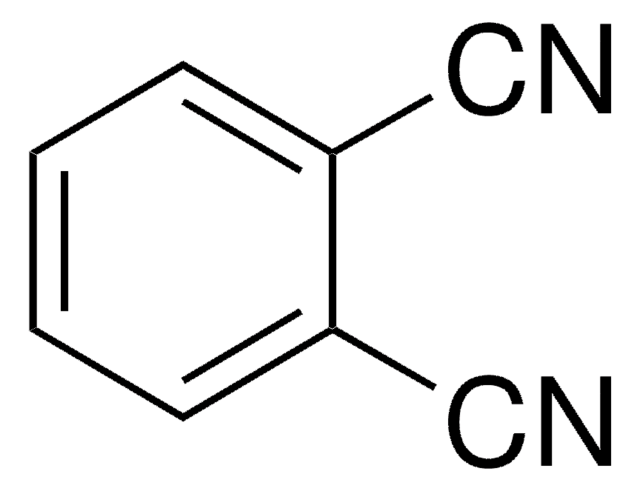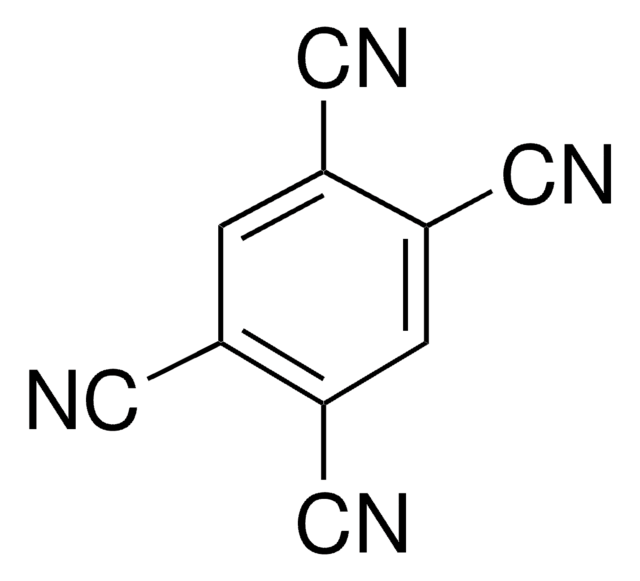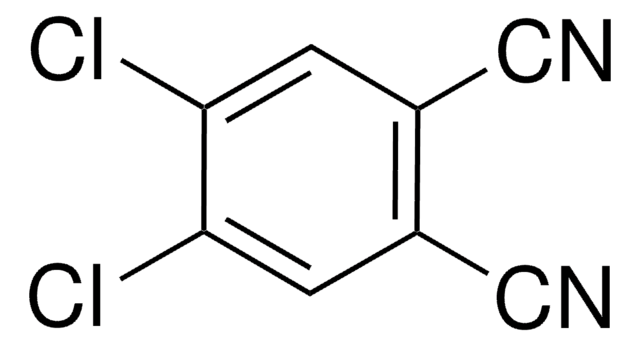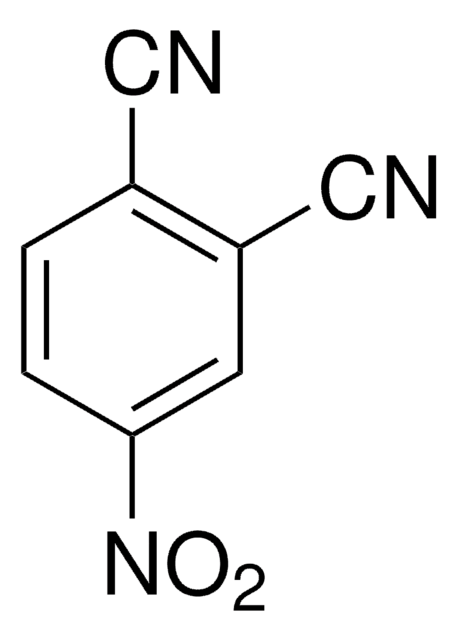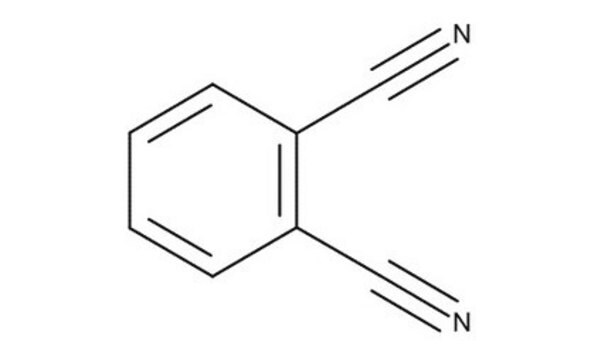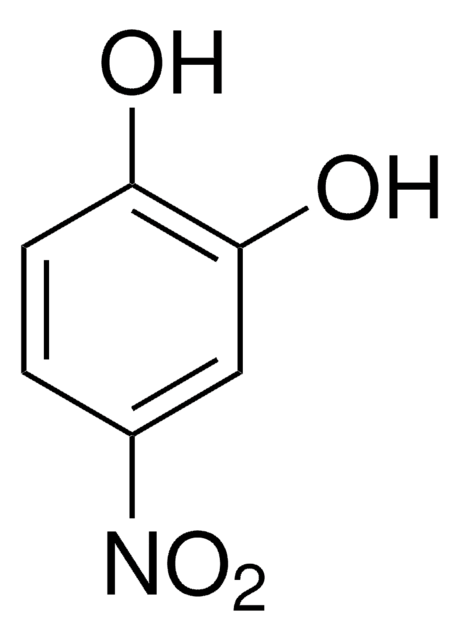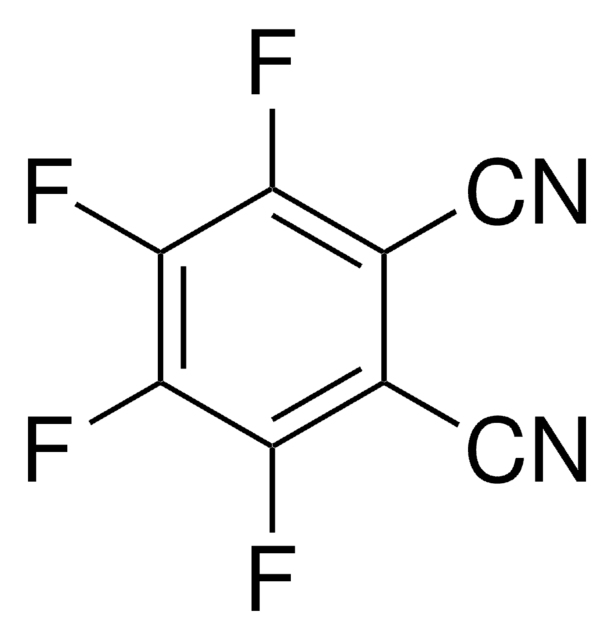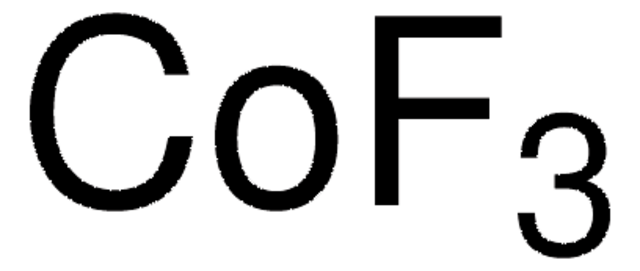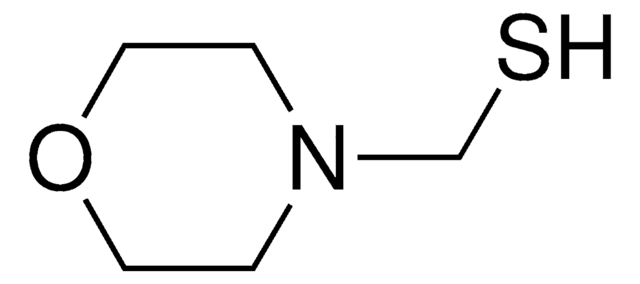459607
4,5-Dioctyloxy-1,2-benzenedicarbonitrile
97%
Synonym(s):
4,5-Dioctyloxyphthalonitrile
Sign Into View Organizational & Contract Pricing
All Photos(1)
About This Item
Linear Formula:
[CH3(CH2)7O]2C6H2(CN)2
CAS Number:
Molecular Weight:
384.55
MDL number:
UNSPSC Code:
12352100
PubChem Substance ID:
NACRES:
NA.22
form:
solid
Assay:
97%
Recommended Products
Quality Level
Assay
97%
form
solid
mp
106-108 °C (lit.)
functional group
nitrile
SMILES string
CCCCCCCCOc1cc(C#N)c(cc1OCCCCCCCC)C#N
InChI
1S/C24H36N2O2/c1-3-5-7-9-11-13-15-27-23-17-21(19-25)22(20-26)18-24(23)28-16-14-12-10-8-6-4-2/h17-18H,3-16H2,1-2H3
InChI key
SSVVHLRGCJLWCP-UHFFFAOYSA-N
Related Categories
Application
4,5-Dioctyloxy-1,2-benzenedicarbonitrile (4,5-Dioctyloxyphthalonitrile) may be used for the preparation of new unsymmetrically substituted DB24C8-phthalocyanines. It may be used for the synthesis of tetrathiafluvalene (TTF)-annulated symmetrical and unsymmetrical phthalocyanines.
Signal Word
Warning
Hazard Statements
Precautionary Statements
Hazard Classifications
Acute Tox. 4 Dermal - Acute Tox. 4 Inhalation - Acute Tox. 4 Oral
Storage Class Code
11 - Combustible Solids
WGK
WGK 3
Flash Point(F)
Not applicable
Flash Point(C)
Not applicable
Personal Protective Equipment
dust mask type N95 (US), Eyeshields, Gloves
Choose from one of the most recent versions:
Already Own This Product?
Find documentation for the products that you have recently purchased in the Document Library.
Preparation and Optical and Electrochemical Properties of Phthalocyanines with the Ttf Unit.
Kimura T, et al.
Phosph. Sulfur Relat. Elem., 188(4), 408-412 (2013)
Martinez-Diaz et al.
Organic letters, 2(8), 1057-1060 (2000-05-11)
[formula: see text] New unsymmetrically substituted DB24C8-phthalocyanines, which are able to form complexes with suitable dialkylammonium cations, have been prepared. These complexes most probably have a pseudorotaxane geometry.
Our team of scientists has experience in all areas of research including Life Science, Material Science, Chemical Synthesis, Chromatography, Analytical and many others.
Contact Technical Service